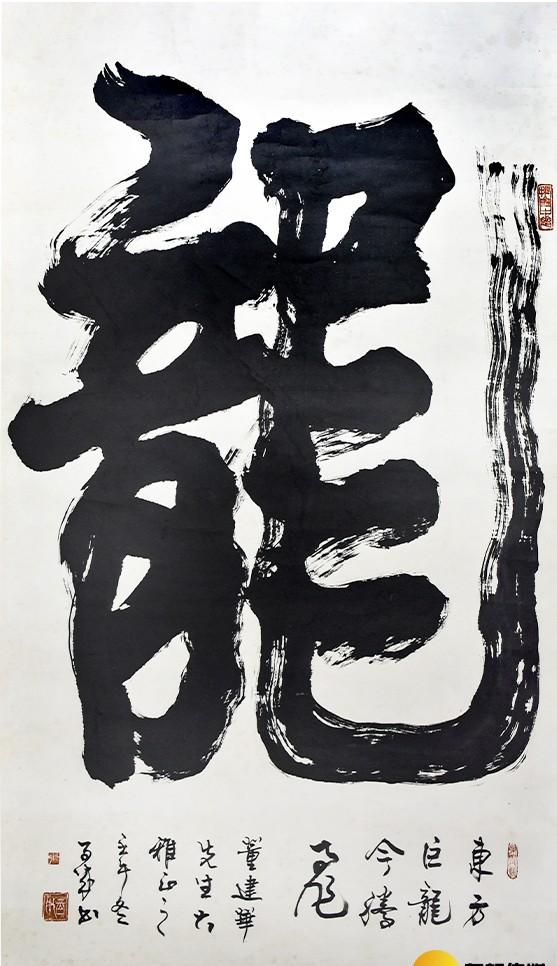Zhang Baicheng, born in May 1943 in Weinan City, Shaanxi Province, is a Chinese list bookmaker, whose works have participated in many domestic exhibitions and won awards, and have twice gone to Japan to participate in exhibitions and won awards and been collected.
zhang baicheng, born in weinan city, shaanxi province in may 1943, is a chinese calligrapher. his works have participated in many domestic exhibitions and won awards. he has participated in two exhibitions in japan and won awards.
Zhang Baicheng's works have spread throughout China, far reaching the United States, Britain, Italy and Southeast Asian countries, with far-reaching influence. He has been awarded the titles of "Meritorious Calligraphy Artist", "World Chinese Outstanding Artist", "World Artist" and so on. He won the "Chinese Cultural Celebrity Achievement Award" and the "Monument Award of the Century Artist".
zhang baicheng's works are all over the country, and have far-reaching influence in the united states, britain, italy and southeast asia. he has been awarded the titles of "meritorious calligraphy artist", "world chinese outstanding artist", "world artist", etc. he won the "achievement award of chinese cultural celebrities" and "century artist monument award".
Zhang Baicheng's list of works is particularly exquisite, and below are two zhang Baicheng calligraphy brought by Ms. Li - "Dragon" and "Chi".
zhang baicheng's works are particularly exquisite. here are two pieces of zhang baicheng's calligraphy, dragon and chi, brought by ms. li.

长:178cm 宽:96.5cm(length: 178cm width: 96.5cm)
List book, ancient "signature book", also known as "big characters". "擘窠" refers to the tiger's mouth in the palm of the hand, the tiger's mouth is like a pincer, the strength of the whole body is grasped, and the control is like a lucky jin, and the tiger and tiger are angry. When Zhang Baicheng wrote the list book, he waved a huge pen peak and danced with his beautiful hair, and the unity of people and books left a deep impression on people.
in ancient times, bangshu was called "shushu", also known as "breaking the big character of a nest". "breaking the nest" refers to the mouth of the tiger in the palm, which is like a forceps. it can be grasped and controlled by the whole body as if it were carrying a jin. the tiger and the tiger are alive. when zhang baicheng wrote the list book, he wielded the huge pen peak and danced with his beautiful beard, which made a deep impression on people.
Looking at the calligraphy "Dragon" and "Chi" from afar, what a momentum! However, under the close look, the structure is compact, the moment is not lost, the rotation is smooth, and the folding is also strong. Flying white flow, the spirit blooms; between the black ink pouring, the air and bones condense. Pen and ink graceful, quiet and simple, the form and content complement each other, is also a fine product.
how magnificent the calligraphy "dragon" and "chi" are! however, in a close look, the structure is compact, the moment is not lost, the turn is smooth, and the fold is also vigorous. in the flowing place of white, the spirit blooms; in the pouring room of black ink, the air bone condenses. the style is elegant, quiet and simple. the form and content complement each other. it is also a fine product.
长:131cm 宽:66.5cm(length: 131cm width: 66.5cm )
Chinese calligraphy, Chinese ink painting, Chinese characters are all natural. The brush, a balance of softness and toughness, Chinese the embodiment of the philosophical spirit. Calligraphy Chinese the externalized expression of cultural spirituality, and the writers of successive dynasties have been the bearers, inheritors and innovators of this spiritual expression.
chinese calligraphy, chinese ink and chinese characters all originate from nature. brush, the balance of softness and tenacity, the embodiment of chinese philosophy. calligraphy, the externalized expression of chinese cultural spirit, is the carrier, inheritor and innovator of the spirit expression.
Zhang Baicheng, the book writer, Lingye. His work "Zhengqi" was published in Qiushi Magazine, No. 13, 2000; "Chi" was published in the "China Political Consultative Conference" No. 8, 2000. These two works are representative works of Zhang Baicheng's fine list of books, with exquisite artistic level, ornamental value and collection value.
zhang baicheng, a scholar, is also a spirit. his work zhengqi was published in the 13th issue of qiushi magazine in 2000 and chi was published in the 8th issue of cppcc in 2000. both of these works are representative works of zhang baicheng's top-quality list books. they are of exquisite artistic level and have ornamental value and collection value.